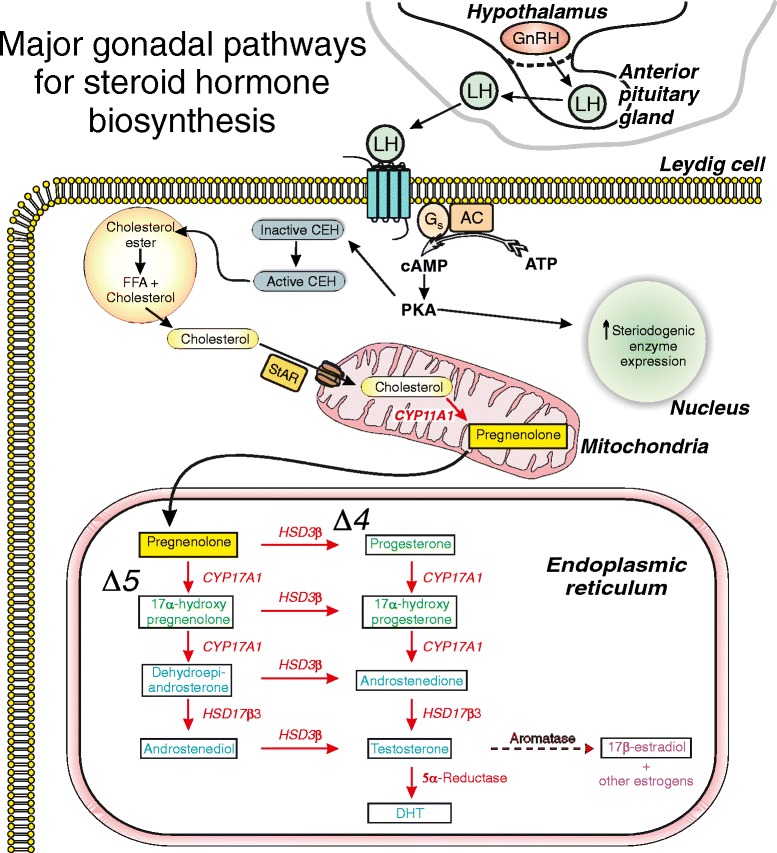Figure 1.

Major gonadal pathways for testosterone biosynthesis. Gonadotropin-releasing hormone (GnRH) secreted from the hypothalamus releases luteinizing hormone (LH) from the pituitary. LH binds to LH receptors on Leydig cells, stimulates Gs, and activates the cAMP/protein kinase A (PKA) pathway. PKA promotes the transport of cholesterol into mitochondria and increases transcription of genes involved in testosterone biosynthesis. Cholesterol is converted to pregnenolone, which diffuses into the endoplasmic reticulum for testosterone biosynthesis via ∆4 and ∆5 pathways. Testosterone is formed by 17β-hydroxysteroid dehydrogenase 3 (HSD17β3) in the ∆4 pathway and by 3β-hydroxysteroid dehydrogenase (HSD3β) in the ∆5 pathway. Testosterone is converted to dihydrotestosterone (DHT) by 5α-reductase, and some are aromatized to 17ß-estradiol.
